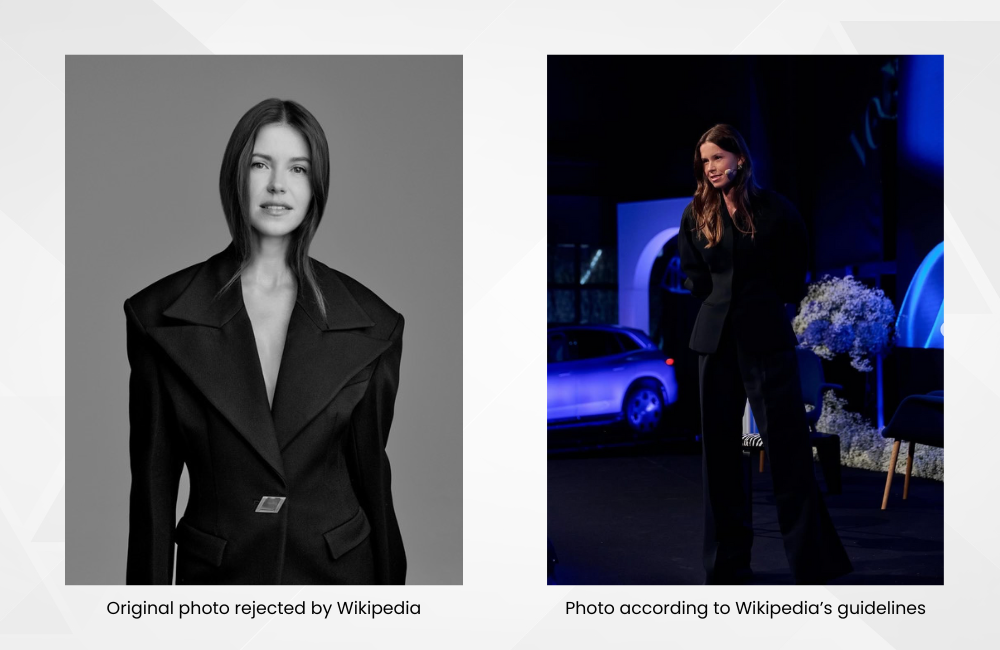How to start a Wikipedia article? 7 tips for a smooth start.
Writing an encyclopedia entry on Wikipedia looks easy at first glance. Just summarise the facts, add a few links and publish. But the reality is much more complicated. Wikipedia has strict criteria that every article must meet – from verifiable sources to neutral language and proper structure. This is the only way it will pass through the rigorous community of volunteer editors. We recently put the whole process of creating a Wikipedia entry to the test, and here are tips on what to do when the first version of a text fails.
Wikipedia for everyone? Yes, but…
Wikipedia may be an open encyclopedia made up of authors from all over the world, but you certainly can’t write anything into it. Anyone can contribute and edit articles, but there are strict rules for publication. They aim for truthful, objective and verified content. Articles must be:
☑️ written neutrally
☑️ supported by credible sources (newspaper articles, professional publications, public records, etc.)
☑️ factually correct and verifiable
☑️ encyclopedic in style, not like a personal blog or presentation
Formal requirements are added to this: links to other articles (called wiklinks), correct structure, a well-filled infobox or perhaps the use of freely distributable images.
1. Knowing the rules is essential
“Starting a new article is easy,” says the first sentence of the Wikipedia guide. But when we dive into the rules for publishing, we find that there is no lack of guidance – we found basic recommendations for beginners, the specifics of writing biographies of public figures, etc. Therefore, we need to filter relevant advice for the content we are currently planning.
2. Searching and filtering information
Once we had identified suitable guides and had the rules down, we followed the search. We focused on all available media outlets – interviews, press releases, blog posts or podcasts. We then evaluated which information was best for an encyclopedic entry and wrote the text.
3. The first version got the thumbs down
Although we followed the recommendations, the first version of the article was evaluated by Wikipedia as promotional and a warning label appeared. However, no inappropriate passages or sentences were flagged and we did not receive a specific comment. The search for wrong parts was therefore up to us.
4. Word-by-word checking
We have decided to edit the entire text so that it contains only necessary and easily verifiable facts. We went through it sentence by sentence, focusing on any evaluative terms (“successful”, ‘significant’, “exclusive”) and replacing them with a plain description of the events.
5. Not just any source is enough
We also paid attention to the quality of the sources. Although the cited articles contained correct information, they came from blogs or lifestyle magazines, which Wikipedia may not consider independent enough. In the end, we stuck to sources such as Mediář, MediaGuru, Radio Wave or the Czech Bar Association.
We then included selected interviews and podcasts in the “External Links” section. While not all of them would pass as credible references for an encyclopedia, in the format of accompanying links they help to expand the context and offer additional insight.
The warning about promotional content has subsequently disappeared.
6. Photo? Beware of copyright
Even though we had professional photographic material for our article, Wikipedia does not have to accept the consent of the subject. It requires copyright permission directly from the photographer – ideally uploaded via the Wikimedia Commons system with a precise license.
Since we couldn’t provide the necessary documentation, Wikipedia removed the photo. We replaced it with another image – one that looks neutral and “wikicompatible” – less “for effect” but safely usable.

7. Wikilinks and Discussion: the key to the survival of the article
When the article went through another rigorous check, a new warning appeared, “Missing wikilinks.” Although we had already added a few links, they were clearly not enough. We therefore embarked on a microscopic analysis of each word and added as many links to relevant wikipedia entries as possible.
The warning didn’t go away even after editing, so we proceeded to the next recommended step – opening a discussion of the article. We wrote to the moderators, explained the context, and got the green light. The article remained published and without further comment.
What did we learn (and what should anyone who wants to write on Wikipedia know)?
☑️ Writing on Wikipedia is a marathon, not a sprint.
☑️ It's not about writing praise, it's about capturing verifiable facts.
☑️ A neutral tone is not cold, but credible.
☑️ Sources are essential - the better the quality, the more likely the article will stand up.
Do you want to be on Wikipedia too? Contact us at koutek@know.cz. We will be happy to take care of the preparation and publication of the article.